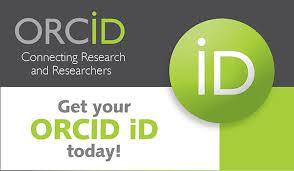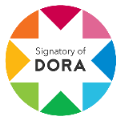Osteoporosis y Microbiota Intestinal: Una Revisión Sistemática de Literatura
Resumen
Esta revisión sistemática explora la relación entre la microbiota intestinal (gm) y la osteoporosis (op), basada en el análisis crítico de 25 estudios clave seleccionados a partir de un mapeo bibliométrico. La evidencia sugiere que la gm desempeña un papel fundamental en la homeostasis ósea a través de mecanismos inmunológicos, endocrinos y metabólicos. Estudios preclínicos en modelos animales han demostrado que probióticos como lactobacillus reuteri y akkermansia muciniphila pueden prevenir la pérdida ósea al modular la vía inflamatoria tlr4/nf-kb y promover la formación ósea mediante igf-1. Por otro lado, investigaciones clínicas revelan disbiosis en pacientes con op, destacando su potencial como biomarcador diagnóstico.
Se identificaron vínculos emergentes entre op y enfermedades como el alzheimer, así como nuevas perspectivas terapéuticas basadas en vesículas extracelulares y regulación del eje intestino-hueso. Sin embargo, aún existen limitaciones importantes, como la escasez de ensayos clínicos controlados y la falta de estandarización en intervenciones probióticas.
Este estudio resalta la necesidad de fortalecer la investigación traslacional y clínica para aprovechar el potencial diagnóstico y terapéutico del microbioma en el tratamiento de la op, proponiendo líneas futuras en medicina personalizada, edición genética y terapias microbianas dirigidas.
Palabras clave
Referencias
Britton, R. A., Irwin, R., Quach, D., et al. (2014). Probiotic L. reuteri treatment prevents bone loss in a menopausal ovariectomized mouse model. Journal of Cellular Physiology, 229(2), 1822–1830. https://doi.org/10.1002/jcp.24600
Cheung, K. C. P., Jiao, M., Xingxuan, C., & Wei, J. (2023). Extracellular vesicles derived from host and gut microbiota as promising nanocarriers for osteoporosis and osteoarthritis therapy. Frontiers in Pharmacology, 13, 1051134. https://doi.org/10.3389/fphar.2023.1051134
Collins, F. L., Irwin, R., Bierhalter, H., et al. (2016). Lactobacillus reuteri 6475 increases bone density in intact females only under an inflammatory setting. PLoS ONE, 11(4), e0153180. https://doi.org/10.1371/journal.pone.0153180
Cryan, J. F., O’Riordan, K. J., Cowan, C. S. M., et al. (2019). The microbiota–gut–brain axis. Physiological Reviews, 99(4), 1877–2013. https://doi.org/10.1152/physrev.00018.2018
Guss, J. D., Horsfield, M. W., Fontenele, F. F., et al. (2017). Alterations to the gut microbiome impair bone strength and tissue material properties. Journal of Bone and Mineral Research, 32(6), 1343–1353. https://doi.org/10.1002/jbmr.3114
Guo, M., Liu, H., Yu, Y., et al. (2023). Lactobacillus rhamnosus GG ameliorates osteoporosis in ovariectomized rats by regulating Th17/Treg balance and gut microbiota structure. Gut Microbes, 15(1), 2190304. https://doi.org/10.1080/19490976.2023.2190304
Hernandez, C. J., Guss, J. D., Luna, M., & Goldring, S. R. (2016). Links between the microbiome and bone. Journal of Bone and Mineral Research, 31(9), 1638–1646. https://doi.org/10.1002/jbmr.2887
Huang, R., Liu, P., Bai, Y., et al. (2022). Changes in the gut microbiota of osteoporosis patients based on 16S rRNA gene sequencing: A systematic review and meta-analysis. Journal of Zhejiang University Science B, 23(12), 1002–1013. https://doi.org/10.1631/jzus.B2100676
Lan, L., Zhang, P., & Zhu, Y. (2020). Study on the correlation between intestinal flora and estrogen-mediated bone immune imbalance in postmenopausal osteoporosis. Chinese Journal of Traditional Chinese Medicine, 45(2), 820–823.
Li, J. Y., Chassaing, B., Tyagi, A. M., et al. (2016). Sex steroid deficiency-associated bone loss is microbiota dependent and prevented by probiotics. Journal of Clinical Investigation, 126(6), 2049–2063. https://doi.org/10.1172/JCI86062
Liushuhua, S., Tongying, C., & Yu, Z. (2021). Analysis of the interrelationship between osteoporosis and Alzheimer’s disease based on bioinformatics. China Journal of Osteoporosis, 11, 1576–1581.
McCabe, L. R., & Britton, R. A. (2015). Prebiotic and probiotic regulation of bone health: Role of the intestine and its microbiome. Current Osteoporosis Reports, 13(6), 363–371. https://doi.org/10.1007/s11914-015-0287-4
Ohlsson, C., Engdahl, C., Fåk, F., et al. (2014). Probiotics protect mice from ovariectomy-induced cortical bone loss. PLoS ONE, 9(3), e92368. https://doi.org/10.1371/journal.pone.0092368
Rowland, I., Gibson, G., Heinken, A., et al. (2018). Gut microbiota functions: Metabolism of nutrients and other food components. European Journal of Nutrition, 57(1), 1–24. https://doi.org/10.1007/s00394-017-1445-8
Schwarzer, M., Makki, K., Storelli, G., et al. (2016). Lactobacillus plantarum strain maintains growth of infant mice during chronic undernutrition. Science, 351(6275), 854–857. https://doi.org/10.1126/science.aad8588
Shuhua, L., & Zhang, Y. (2021). Shared gene expression patterns between OP and Alzheimer’s disease reveal possible therapeutic targets. China Journal of Osteoporosis, 11, 1576–1581.
Sjögren, K., Engdahl, C., Henning, P., et al. (2012). The gut microbiota regulates bone mass in mice. Journal of Bone and Mineral Research, 27(6), 1357–1367. https://doi.org/10.1002/jbmr.1588
Villa, J. K. D., Díaz, M. A. N., Pizziolo, V. R., & Martino, H. S. D. (2017). Effect of vitamin K in bone metabolism and vascular calcification: A review. Critical Reviews in Food Science and Nutrition, 57(18), 3959–3970. https://doi.org/10.1080/10408398.2016.1203283
Xiehui, X., Liu, J. H., & Chen, C. Y. (2021). Extracellular vesicles from child gut microbiota enter into bone to preserve bone mass and strength. Advanced Science, 8(1), 2004831. https://doi.org/10.1002/advs.202004831
Xu, Z., Xie, Z., Sun, J., et al. (2020). Gut microbiome reveals specific dysbiosis in primary osteoporosis. Frontiers in Cellular and Infection Microbiology, 10, 160. https://doi.org/10.3389/fcimb.2020.00160
Yan, J., Herzog, J. W., Tsang, K., et al. (2016). Gut microbiota induce IGF-1 and promote bone formation and growth. Proceedings of the National Academy of Sciences, 113(47), E7554–E7563. https://doi.org/10.1073/pnas.1607235113
Zhang, H., Pertiwi, H., Michiels, J., et al. (2024). Improvement of antioxidant capability by dietary N-acetyl cysteine supplementation alleviates bone loss induced by chronic heat stress in finisher broilers. Journal of Animal Science and Biotechnology, 15, 158. https://doi.org/10.1186/s40104-024-01044-4
Zhang, J., Zhang, L., Zhang, C., et al. (2015). Loss of bone and Wnt10b expression in male type 1 diabetic mice is blocked by the probiotic Lactobacillus reuteri. Endocrinology, 156(9), 3169–3182. https://doi.org/10.1210/en.2015-1135
Zhuguangsu, G., Jianxin, Z., & Hao, Z. (2022). The effect of Bifidobacterium breve on the gut microbiota and metabolites of mice with Alzheimer’s disease induced by Aβ(1-42). Food and Fermentation Industries, 48(3), 70–77.
Goerlandt, F., & Li, J. (2022). Forty years of risk analysis: A scientometric overview. Risk Analysis, 42(10), 2253–2274. https://doi.org/10.1111/risa.13886
DOI: https://doi.org/10.23857/pc.v10i6.9855
Enlaces de Referencia
- Por el momento, no existen enlaces de referencia
Polo del Conocimiento
Revista Científico-Académica Multidisciplinaria
ISSN: 2550-682X
Casa Editora del Polo
Manta - Ecuador
Dirección: Ciudadela El Palmar, II Etapa, Manta - Manabí - Ecuador.
Código Postal: 130801
Teléfonos: 056051775/0991871420
Email: polodelconocimientorevista@gmail.com / director@polodelconocimiento.com
URL: https://www.polodelconocimiento.com/













